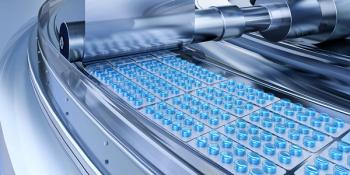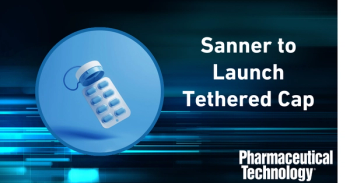
- Pharmaceutical Technology-11-01-2009
- Volume 2009 Supplement
- Issue 6
Plastic Prefilled Syringes: A Better Fit for Autoinjector Systems
The authors describe the ways in which plastic prefilled syringes can be an alternative that provides consistent performance, protects drugs prone to degradation, and enhances patient safety.
This article is part of PharmTech's
More than two billion prefilled syringes are developed and used each year. The rise of the prefilled syringe as the preferred container for injectable drugs began with Sanofi and Rhône-Poulenc Rorer's successful introduction of syringes for heparins to the European market in the early 1980s. The prefilled syringe market has expanded considerably because of factors such as the growth of biopharmaceuticals, the need to eliminate overfills, the need for precise delivery volumes, the desire for convenient delivery, the quest for cost effectiveness, and the goal of reducing dosage errors (1–4).
Currently, most prefilled syringes are made of glass, but plastic syringes are gaining popularity, particularly in applications for which glass is an unsuitable delivery system. In the last decade, pharmaceutical protein and peptide drug products have been approved for use with prefilled plastic syringes. One example is a peptide drug product in a Daikyo Crystal Zenith (CZ) syringe (Daikyo Seiko, Tokyo) (see Figure 1). More products using plastic prefilled syringes are in various phases of drug development.
Figure 1: Daikyo Crystal Zenith prefillable syringes (Daikyo Seiko, Tokyo). (IMAGES ARE COURTESY OF WEST)
The need for combination-drug delivery systems
Many chronic diseases such as multiple sclerosis and rheumatoid arthritis require the self-administration of injectable treatments. This need has increased interest in combination-drug delivery systems that are safe, convenient, and help improve the administration process.
Pen injectors and multidose cartridges were created for patients who need frequent injections. These devices were limited to specific therapies such as diabetes and growth hormones, which often require weighed dosages or dose titration. Although pen injectors were designed for frequent injections and for patients who require variable dose capabilities, they are not ideal for chronic users of fixed-dose medications, including patients suffering from impaired dexterity. The need for a safe, reliable, easy-to-use, single-dose injection system for these patients soon became apparent.
Autoinjectors have been recognized as a convenient method for delivering drug products through an intuitive activation mechanism designed especially for patients whose poor dexterity affects their ability to inject a drug treatment effectively with a traditional syringe (see Figure 2). As patients and caregivers become increasingly involved in determining the best treatment option, biopharmaceutical, pharmaceutical, and device companies are adapting to meet consumers' needs.
Figure 2: ConfiDose autoinjector (West, Lionville, PA). (IMAGES ARE COURTESY OF WEST)
Traditional systems' performance problems
Autoinjector systems traditionally use 1-mL glass prefilled syringes. These systems have been successful, but they have notable limitations, including performance problems. Recent studies have shown that silicone oil, which is used to increase lubricity in syringe systems, is often distributed unevenly, thus leaving certain areas of the prefilled syringe surface with insufficient lubrication (5). The inconsistent silicone-oil coating can significantly affect the piston-travel and glide forces in autoinjectors. In 2006, commercial lots of a drug product delivered by an autoinjector that contained a glass prefilled syringe were recalled in several European countries because of problems with slow or incomplete delivery of the drug (6). Uneven silicone coating may increase travel forces and cause failures such as incomplete injections.
The plastic alternative
Growth in the market for plastic prefilled systems is expected to result from a rise in new biotechnology products and vaccines. This growth will be associated with significant challenges in the formulation development of proteins and monoclonal antibodies, which are typically administered in high doses. High-concentration proteins tend to interact with each other and with the packaging components, thus causing protein instability, especially when the volume of delivery is approximately 1 mL. Glass prefilled syringes typically face the additional challenges of breakage, the presence of particulates, the glass's reactivity to the drug product, and potential leachables such as silicone, tungsten, and adhesive.
Plastic prefilled syringes provide a way to solve such problems (7, 8). Cyclic olefin polymer resins such as CZ possess many advantageous properties, including glasslike transparency, which permits the visual inspection of the manufactured components and of the parenteral products that are delivered to the end user. The polymers exhibit high impact resistance and break resistance and form an excellent moisture barrier (9, 10).
A plastic prefilled syringe can eliminate the need for silicone, tungsten, and adhesive, depending on the quality attributes of the entire prefilled system. For instance, the CZ 1-mL insert needle (IN) system uses no silicone to improve syringe functionality, no tungsten (which is often required to form glass syringes), and requires no adhesive to hold the needle in place.
Tungsten has been identified as a leachable in glass prefilled syringes. Reports describe tungsten-based particulate matter that leached into and interacted with the protein drug product (11). Tungsten pins typically are used to keep the fluid path open at the nozzle end of the syringe during the glass-syringe formation process. Upon cooling, a needle is staked in with adhesive to make a glass prefilled syringe with a staked needle (SN). Residual tungsten can migrate into the drug product and cause the protein to form protein–tungsten aggregates. Although this phenomenon appears to occur only with specific proteins, it is important to test for protein–tungsten interaction at an early stage of drug development. Concerns about aggregation may be mitigated by plastic SN syringes.
Silicone-oil-free syringes have been shown to have consistent travel forces over time and at various temperatures. The tighter dimensional tolerance of plastic syringes and the consistency of syringe functionality make autoinjectors' operation predictable. The break resistance of the finger flange for plastic syringes is likely to be significantly higher than that of glass syringes. Because of their higher dimensional tolerances, plastic 1-mL IN syringes are likely to have much less residual volume than glass 1-mL SN syringes. This difference means that less drug product is wasted or left behind in the barrel, and it could yield significant savings for drug manufacturers.
Autoinjectors' limitations
Limitations on glass autoinjectors' performance may begin with their material of construction. Glass is a formed product that must be heated. Mandrels form glass syringes' overall length, nose or tip, and flanges. This process can create dimensional variability. During manual operation, a glass syringe's variability usually is mitigated by the human user. However, dimensional tolerances may vary so much that an autoinjector system may be subject to failures such as incomplete injections.
The majority of today's autoinjector delivery systems include glass prefilled syringes that are inserted by the pharmaceutical manufacturer. The products are sold as single-dose, disposable injection systems.
Glass creates the possibility of breakage, which is a safety concern. Upon activation, the system's spring places all of its pressure on the syringe's glass flange. The flange is the weakest point of a syringe; it snaps off if subjected to enough pressure. In autoinjectors, a strong spring is required to overcome variability in the sustaining force or inconsistent siliconization in a glass prefilled syringe. Viscous drugs require more pressure for a complete injection. This pressure can lead to breakage or an incomplete injection. A change in the place where pressure is applied, or registered, can greatly affect the safety of the delivery system.
Overcoming autoinjectors' limitations
The simple technique of registering the force of the injection on the syringe's shoulder or nose instead of the flange creates two benefits for glass and plastic syringes. First, it places the pressure of the spring on the strongest part of the syringe, which reduces the risk of glass breakage.
Second, registering force on the nose or shoulder compensates for the dimensional variability associated with glass syringes. For example, if the overall length of the syringe is too great, registering the pressure at the flange could affect the performance of the injection. In contrast, registering force at the shoulder makes it easier to know precisely where the end of the syringe is during needle insertion and dose delivery. The depth of needle insertion is much more consistent with this technique than it is when the syringe is supported at the flange.
The ConfiDose autoinjector system from West (Lionville, PA) is an example of this change in design, which is meant to facilitate injections. The ConfiDose system is registered on the shoulder. The system also eliminates some steps of the injection process, which can be beneficial to patients. The three-step operation of ConfiDose automatically inserts the needle, delivers the complete dose, and retracts the needle from the injection site, thus leaving the delivery system safe for disposal. The autoretraction technology may help alleviate pain for those with poor dexterity, as opposed to manually removing the needle.
Syringes made of cyclic olefin polymers have advantages for autoinjector systems such as tighter dimensional tolerances, increased resistance to breakage, and consistency of the travel forces over time. The combination of an autoinjector delivery system with a plastic syringe can help ensure a level of drug stability for manufacturers and provide end users with reliable product performance.
Summary
Despite the fact that glass is still the predominant material, plastic prefilled syringes are gaining ground because of the many benefits associated with cyclic olefin polymer resins. Drug manufacturers that seek autoinjector technology for their products, particularly for biologicals and vaccines, should consult a vendor that understands primary container performance. Syringes' dimensions should be as consistent as possible, and the syringes should preferably be molded instead of formed, to help overcome the problem of break-force variability. Plastic syringes also can improve the safety of the delivery by eliminating tungsten or glue contamination. If a glass syringe is necessary, the autoinjector itself can be modified to aid the delivery process by registering the force on the strongest part of the syringe. This technique helps to overcome the dimensional variability of the glass prefilled syringe, reduce breakage, provide a consistent depth of injection, and create a reliable system that delivers the dose easily and effectively to the patient.
Douglas Stout* is director of strategic market development, and Vinod Vilivalam is director of strategic market and technical development for the Daikyo Crystal Zenith prefillable and vial platform, both at West, 101 Gordon Dr., Lionville, PA 19341, tel. 732.946.2929, fax 732.945.2189.
*To whom all correspondence should be addressed.
References
1. M.N. Eakins, Am. Pharm. Rev. 10 (6), 47–51 (2007).
2. B. Harrison and M. Rios, Pharm. Technol. 31 (3), 50–60 (2007).
3. B. Detournay et al., Eur. Hosp. Pharm. 4 (4), 109–113 (1998).
4. M.J. Akers et al., PDA J. Pharm. Sci. Technol. 61 (5), 337–361 (2007).
5. B. Eu et al., poster presented at AAPS National Biotechnology Conference, Toronto, June 2008.
6. MHRA, Class 2 Drug Alert, Medicines Recall, Reference MDR 03-10/06, Neulasta SureClick Injection Device (London, Oct. 4, 2006).
7. R. Esfandairy et al., poster presented at AAPS National Biotechnology Conference, Toronto, June 2008.
8. B. Lahendro,
9. J. Shin et al., Pure Appl. Chem. 77 (5), 801–814 (2005).
10. M.N. Eakins, Bioprocess Int. 3 (6), 52–58 (2005).
11. J.S. Bee et al., J. Pharm. Sci. 98 (9), 3290–3301 (2009).
Articles in this issue
about 16 years ago
From Needle to Pill: Reformulating Injectable Drugs for Oral Deliveryabout 16 years ago
Current Perspectives on Aseptic Formulationsabout 16 years ago
Technology Forecast for Injectablesabout 16 years ago
Risk Management for Aseptic Processingabout 16 years ago
Targeting Therapeutics for the Middle and Inner Earabout 16 years ago
USP's Ferrules and Caps Labeling Changes Put on HoldNewsletter
Get the essential updates shaping the future of pharma manufacturing and compliance—subscribe today to Pharmaceutical Technology and never miss a breakthrough.




